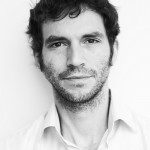Lien vers Pubmed [PMID] – 22701050
Genetics 2012 Jun;191(2):309-17
The segregation and random assortment of characters observed by Mendel have their basis in the behavior of chromosomes in meiosis. But showing this actually to be the case requires a correct understanding of the meiotic behavior of chromosomes. This was achieved only gradually, over several decades, with much dispute and confusion along the way. One crucial step in the understanding of meiosis was provided in 1909 by Frans Alfons Janssens who published in La Cellule an article entitled “La théorie de la Chiasmatypie. Nouvelle interprétation des cinèses de maturation,” which contains the first description of the chiasma structure. He observed that, of the four chromatids present at the connection sites (chiasmata sites) at diplotene or anaphase of the first meiotic division, two crossed each other and two did not. He therefore postulated that the maternal and paternal chromatids that crossed penetrated the other until they broke and rejoined in maternal and paternal segments new ways; the other two chromatids remained free and thus intact. This allowed him also to propose that the chromatids distributed in the four nuclei issued from the second meiotic division had various combinations of maternal and paternal segments of each chromosome. And conversely, permitted the appreciation that the laws of Mendelian segregation required breakage and joining (crossing over) between homologous non-sister chromatids. Although Janssens’s article found a broad appreciative audience and had a large influence on the chromosomal theory at that time, his theory was resisted by both geneticists and cytologists for several decades. This Perspectives aims to highlight the novelty of Janssens’s chiasmatype theory by examining the historical background and our actual understanding of meiotic recombination.

